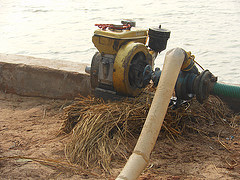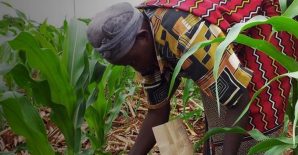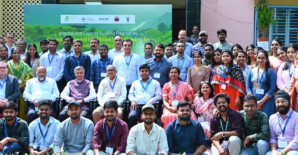In an unfortunate irony, farmers in Bihar—a water-rich state in northern India—have been grappling with frequent droughts since 2009. Bihar has an annual groundwater availability of more than 26 billion cubic meters; however, due to poor electricity supply and the high cost of diesel, farmers are unable to capitalize on this resource and fuel their irrigation pumps, thus providing inadequate irrigation to their crops during droughts.
In a recent IFPRI discussion paper titled “Droughts, distress, and policies for drought proofing agriculture in Bihar, India”, the authors assess the impact of droughts on crop production and poverty in the state, and the effectiveness of government programs in mitigating their impact. The study shows that, in the widespread drought of 2009, paddy production in Bihar declined by 28 percent from the preceding three-year period. By contrast, in other states with a comparable or higher rainfall deficit, the decline in paddy production, if any, was considerably lower.
By using consumption survey data from three rounds of the National Sample Survey Organization (NSSO), the authors show that droughts also stifle growth in the average monthly per capita expenditure and any decrease in head count ratio (HCR) in rural Bihar. Furthermore, they establish that two large central government safety net programs—the Targeted Public Distribution System (TPDS) and the Mahatma Gandhi National Rural Employment Guarantee Scheme (MNREGA)—seem to be of little help in alleviating the distress caused by droughts.
Evidently, the incidence of droughts, coupled with deficit irrigation in Bihar, adversely impacts crop production as well as the welfare of the rural population. Improved access to cheaper irrigation would be a drought mitigation strategy, benefiting not only crop production but also the welfare of the millions who depend on agriculture in the state.
The authors study three efforts by the government of Bihar to promote irrigation in the state and make the following observations:
- The subsidy on shallow tube wells and diesel pump sets is not leading to irrigation intensification because fuel prices continue to increase.
- The revival of old public tube wells and installation of new ones also does not increase accessibility to irrigation, as power supply continues to remain poor in Bihar.
- The cash subsidy on diesel for irrigation in drought-affected blocks is also riddled with several problems. Results of a primary survey in the Nalanda district show that the scheme does not significantly benefit the smallholders and farmers who do not own diesel pump sets.
Based on these results as well as encouraging findings from an ongoing IFPRI study on solar pumps for irrigation in Bihar, the authors conclude that the state government should aggressively promote solar pumps as a way to provide inexpensive irrigation to farmers. Investing in irrigation infrastructure running on a renewable energy source could serve as a long-term solution for drought mitigation in Bihar.




